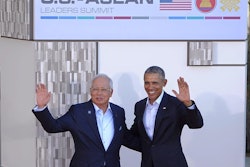
Designed to unlock opportunity throughout the Asia-Pacific, the Trans-Pacific Partnership (TPP) is a landmark agreement in international trade. Larger participating countries include the U.S., Japan, Canada, Australia, New Zealand, Chile and Mexico. Combined with Singapore, Malaysia, Peru, Vietnam and Brunei, the 12 member nations represent 40 percent of the world gross domestic product (GDP) and double the amount of cross-border economic activity as the North American Free Trade Agreement (NAFTA).
Current Status of the TPP
The TPP is slated to reduce or eliminate 18,000 tariffs, and outlines technical regulations, standards and approval processes for goods, data and services across the trade arena. It also provides protections to some specific industries and technologies. Importers and exporters from participating countries need to evaluate their products to identify if they qualify for preferential duty treatment under TPP.
While the TPP is focused on removing competitive barriers for goods, it’s also aimed at leveling the playing field with legislation on geopolitics, market access, intellectual property, labor, environment, anti-corruption and cross-border data flow. What’s also unique is that the TPP has an open architecture as far as signatories. While other countries such as China or Thailand may choose to join at a later date, they would, however, need to agree to a number of laws that may differ from those currently governing their own national borders today.
Impact on the Supply Chain Industry
How the TPP will actually affect the average company at a strategic and operational level remains to be seen. It will certainly spur greater trade flows and shipping opportunities between member nations. This will affect supply chain processes, people and technology. Businesses will want to proactively consider the potential implications of the TPP. Some areas of focus are outlined below:
- Evaluate sourcing patterns. By opening up markets with reduced or zero duty implications, the competitive landscape changes, especially in regard to automotive, textiles, technology and agriculture industries. As a result, importers and exporters will want to evaluate their sourcing patterns to see if it makes business sense to re-source goods from a TPP member nation.
- Conduct free-trade agreement (FTA) cost/benefit analysis. For a clear picture on which FTA to use and when, companies will need to perform a cost/benefit analysis. For instance, TPP rules of origin (ROO) are less complex than NAFTA’s, but don’t allow for as much foreign content. For member nations of both programs, qualifying for preferential duty treatment under TPP on some goods may prove more difficult than qualifying for preferential duty treatment under NAFTA.
- Assess the shipping network. Organizations will want to examine their existing freight forwarder and broker relationships, and determine if new partnerships are required to serve TPP markets. Companies also need to note that, like other trade programs, the TPP will have strict limitations on production processes during transit (transshipment) to ensure the program cannot be circumvented.
- Identify tools to streamline compliance. Companies will need to demonstrate that goods qualify for preferential claims and that supporting documents are in place to maintain a complete audit trail. Technology can help ease this administrative burden with tools to complete the qualification and solicitation processes down to the component (bill of material or BOM) level, and to manage complex ROOs, tariffs and currencies.
- Analyze enterprise system needs for TPP-related content. To help reduce risk, and duty spend and safeguard compliance, companies will need to look at their enterprise system to complete compliance-related activities at a global level. This includes effectively using/reusing trade data in company and partner systems, reducing duplicate processes across countries and regions, and directing valid trade content into enterprise resource planning/global trade management (ERP/GTM) systems.
- Identify tools for storage and record-keeping. Customs compliance is an administrative-intensive field. It lends itself well to technology that reduces the high costs associated with traditional paper-based practices, and that fundamentally improves data accuracy, accessibility and availability, all of which are critical to effective compliance management.
Parting Thoughts
If it is formally approved and ratified by all participating nations, the TPP will become the world’s largest trade deal. The compliance obligation and risk that comes with any new trade program is significant and, given its magnitude and scope, the TPP will create as many new challenges as new opportunities. For the logistics and supply chain industry, its potential impact is too extensive to not start discussions now.















